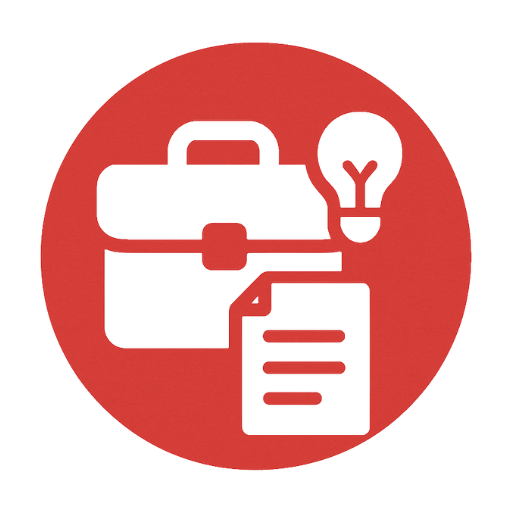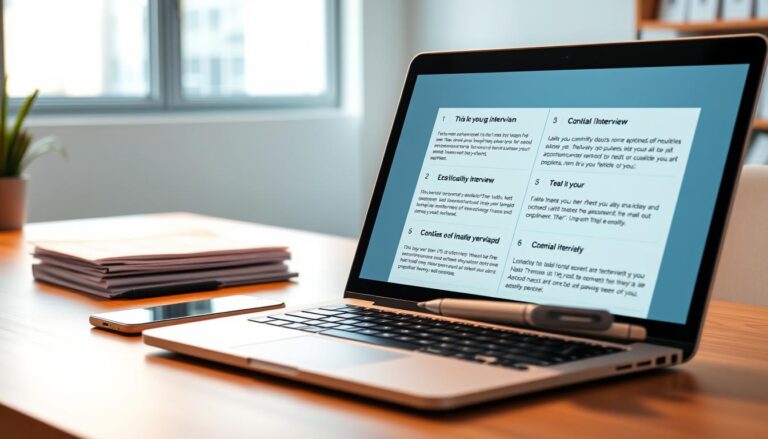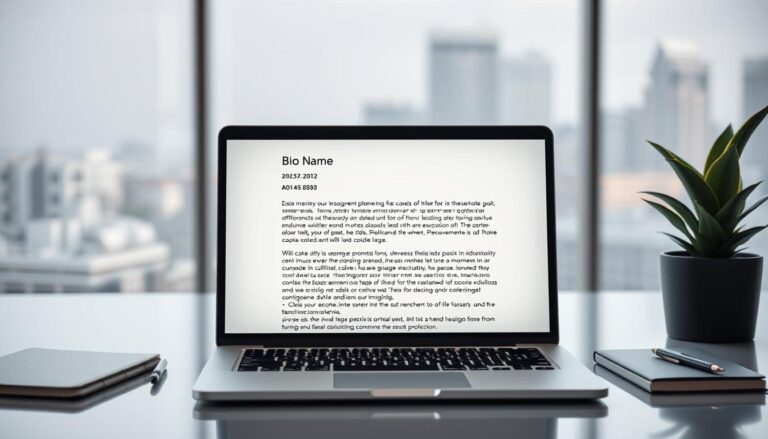Time Management Tips for Working Professionals
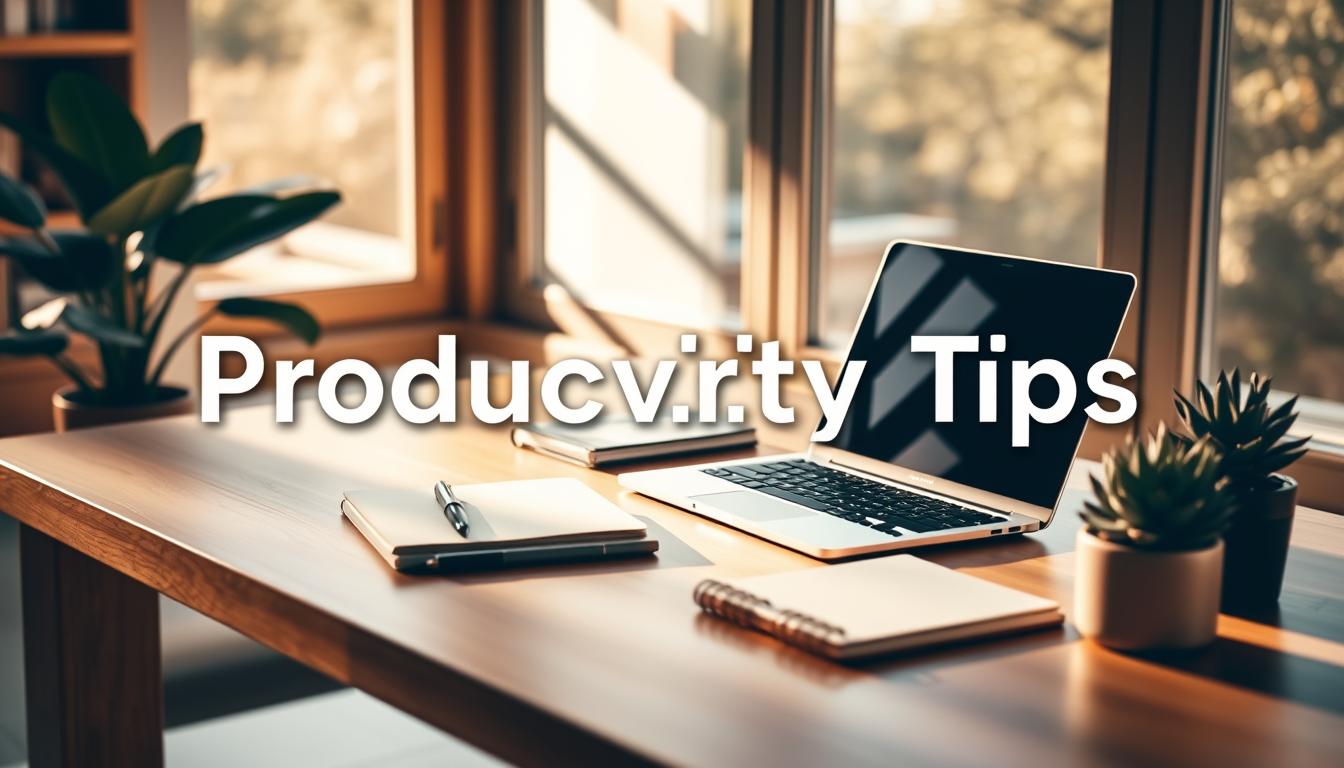
Effective productivity is key for working pros to balance work and life better. Handling daily tasks well cuts down stress and boosts motivation.
By focusing on what’s most important and avoiding distractions, you can do deep work. This helps prevent burnout and improves your overall health. It’s not just about doing more; it’s about creating a lasting, efficient workflow.
With smart strategies, working folks can make their daily routines better. This leads to more productivity and a more rewarding career.
The Impact of Time Management on Professional Success
Effective time management is key in today’s fast-paced work world. Those who manage their time well can focus on important tasks, meet deadlines, and reach their goals. This boosts their productivity and helps them succeed.
Meetings and Communication Overload
Professionals often face challenges like too many meetings and communication. Slack’s State of Work report shows many workers struggle to stay motivated and focused because of this. It can make them less productive and more stressed.
Digital Distractions and Multitasking
Digital distractions and trying to do too many things at once are big hurdles. Notifications and the urge to multitask can make it hard to stay focused. Slack’s State of Work report found that a third of workers struggle with motivation, and nearly as many have trouble staying focused. By reducing digital distractions and avoiding multitasking, professionals can stay focused and get more done in less time.
Understanding how time management affects professional success is crucial. By tackling challenges like too many meetings, digital distractions, and multitasking, professionals can start achieving their goals. Good time management unlocks professional potential and leads to long-term success.
Assessing Your Current Relationship with Time
Understanding how you use your time is key to better time management. Start by tracking how you spend your time. Try keeping a time log, noting what you do in 15-minute chunks for a week or two.
This method reveals time-wasting habits and areas for improvement. It’s a simple yet effective way to see where you can do better.
Tools for Tracking Your Time Usage
Many productivity tools can help you track your time. Digital calendars, time tracking apps, and project management software offer valuable insights. They help you stay on track and focused on what’s important.
Using a time log or these tools lets you understand your daily habits better. You’ll spot chances to make your schedule work better for you. This way, you can balance work and personal life more effectively.
It’s important to regularly check and tweak your time management plan. By always looking at how you use your time and making changes, you stay productive. You’ll reach your goals more easily.
Time Management Tips for Working Professionals
Learning to manage your time well is key for professionals to succeed. It helps you focus on what’s important, handle your tasks, and reach your goals.
The 80/20 Rule (Pareto Principle)
The 80/20 Rule, or Pareto Principle, shows that 80% of results come from 20% of efforts. Find the tasks that matter most and spend your time on them.
For example, if you’re in sales, a few clients might bring in most of your income. Focus on those clients to get the best results.

The Urgent vs. Important Matrix is a tool for deciding what to do first. It sorts tasks into four groups: urgent and important, important but not urgent, urgent but not important, and not urgent or important.
Using this matrix, you can focus on what’s truly important. Say, answering a critical email is urgent and important. Planning a project is important but not urgent.
By using these time management tips, professionals can work smarter, feel less stressed, and enjoy a better balance between work and life.
Strategic Planning Systems for Busy Professionals
Strategic planning is a big help for professionals who want to manage their time better. It lets them focus on what’s important, feel less stressed, and get more done.
Choosing when to plan your day is a big part of strategic planning. There are two main ways: Morning Planning and Evening Planning.
Morning Planning vs. Evening Planning
Morning planning means setting your day’s priorities early. This way, you can tackle the most critical tasks when you’re most alert. Evening planning, on the other hand, prepares you for the next day. It helps you start strong the next morning.
Both methods have their advantages. Morning planning lets you handle urgent matters right away. Evening planning helps you unwind and prepare for a smoother start. Try both to see what fits your life best.
It’s key to plan for both must-do tasks and fun activities. Planning isn’t just about meetings; it’s about making a day that’s balanced. This balance improves your work-life balance and well-being.
Adding a strategic planning system to your day can help you manage your time better. It boosts your productivity and helps you reach your goals faster.
Productivity Techniques That Transform Workdays
Productivity techniques can make workdays more efficient and less stressful. The Pomodoro Technique is a great example. It involves working on a task for 25 minutes, then taking a five-minute break.
This method helps you stay focused by cutting out distractions. By setting a specific time for tasks, you can finish them faster. The breaks help prevent burnout and boost productivity.
Task prioritization is another key technique. It means doing the most important tasks first. This way, you make the most of your time. You sort tasks by urgency and importance, then focus on the top ones.
Time management is also key for productivity. Using schedules and avoiding multitasking helps manage time better. By setting aside specific times for tasks and reducing distractions, you stay on track and reach your goals.
Adding these productivity techniques to your daily routine can greatly improve your work. Techniques like the Pomodoro Technique and task prioritization can change your workdays for the better. They help you achieve more success.
Leveraging Technology to Streamline Your Workday
Using technology to make workdays better is a big win for busy people. It helps them manage time better, do less manual work, and focus on what really matters.
Project Management Tools
Project management tools are key for organizing tasks and working with teams. Tools like Trello, Asana, and Monday.com help set priorities, meet deadlines, and use resources well. They make teams work better and reach goals faster.
AI tools in project management can spot problems early and suggest the best way to tackle tasks. This helps teams stay on course and adjust to project changes smoothly.
Note-Taking and Idea Capture Systems
Note-taking and idea capture systems are crucial for keeping track of ideas and meeting notes. Evernote, OneNote, and Simplenote let users jot down ideas and find them easily. They work across devices, so important info is always within reach.
AI tools can summarize big documents, point out key points, and even translate text. For example, Slack AI can summarize chats and answer questions, saving a lot of time. This lets professionals focus on creative and strategic work.
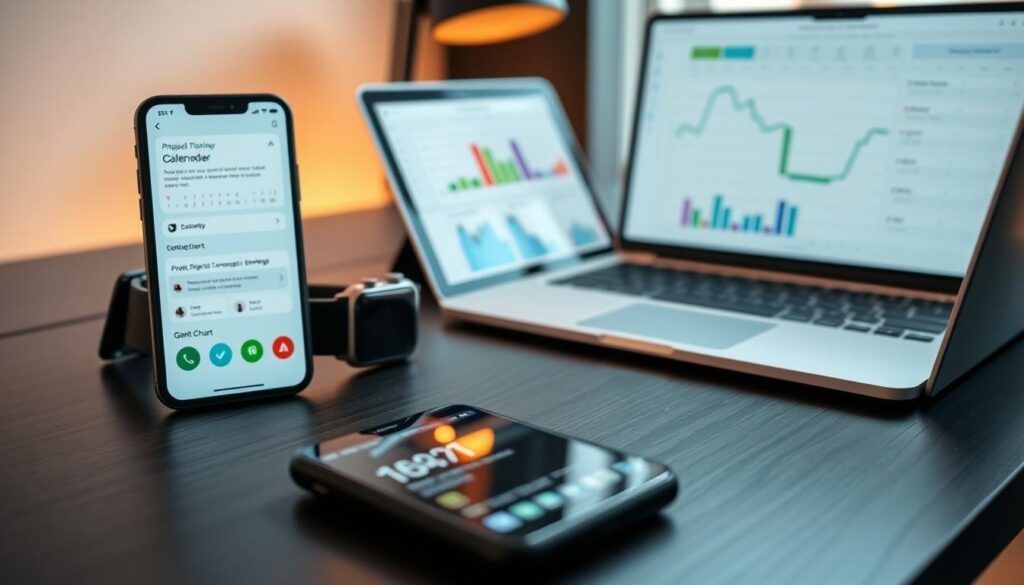
Technology can greatly improve productivity and time management. Whether it’s through project management or note-taking tools, the right tech makes workdays smoother and work better.
Overcoming Workplace Time Management Challenges
Time management issues can really hurt workplace productivity. Problems like multitasking, clutter, and disorganized info can waste a lot of time. This makes work less efficient.
Multitasking might seem like it helps, but it can actually cut productivity by 40%. To fix this, try to focus on one thing at a time. Using tools like task lists or planners can also help keep you on track.
Clutter and disorganized info are big problems too. A messy desk can make your mind feel cluttered, making it hard to concentrate. Cleaning up your space and digital files can help a lot. Try setting up a filing system, both for papers and digital files, to find what you need fast.
To beat these problems, you need strategies that fit your work style. This could mean setting clear goals, focusing on what’s most important, and cutting out distractions. These steps can boost your workplace productivity and help you find a better balance between work and life.
By sticking to one task and keeping your space tidy, you can get better at managing your time. This will make you more productive and less stressed at work.
Work-Life Integration for Long-Term Success
Professionals who master work-life integration often find long-term success and happiness. It’s key to balance work and personal life for lasting productivity and joy.
Effective work-life integration means setting clear work and personal life boundaries. It’s about prioritizing tasks and using technology to make work easier. This way, you avoid burnout and enjoy a better life quality.
Warning Signs of Time Management Burnout
Poor time management and too much screen time can cause fatigue and mood swings. It’s important to spot burnout signs like constant stress, low motivation, and less productivity. This helps you take action early.
To bounce back from burnout, try rewarding yourself for managing your time well. Also, use recovery methods like meditation, exercise, and spending time with family. These can reduce stress and boost your well-being.
By focusing on work-life integration and using recovery strategies, you can find a better balance. This leads to long-term success and a happier life.
Conclusion
Mastering time management is key for success and happiness. By looking at how you use time, planning well, and using productivity tips, you can make your workday better. This can really improve how you spend your time.
It’s important to check if your time management works well. Making changes can help you achieve more. This way, you can enjoy a better life at home and work.
Using the tips and techniques we talked about can lead to a more balanced life. Start making changes today. This will help you have a better workday and a brighter future.
